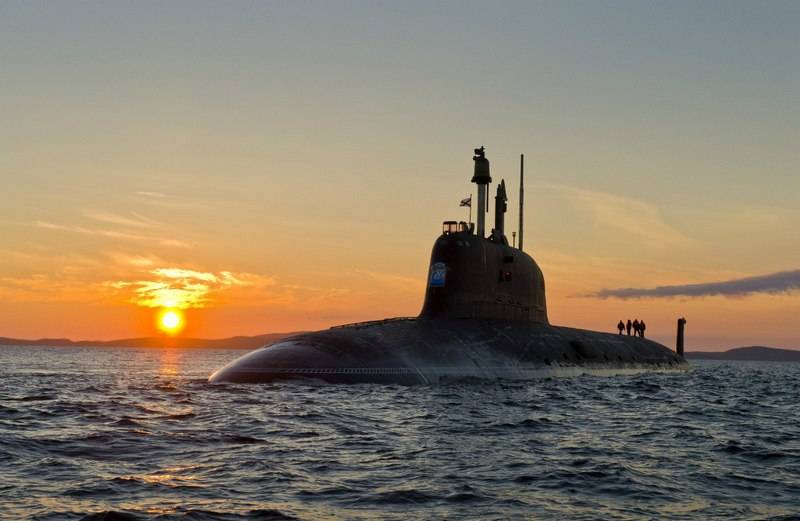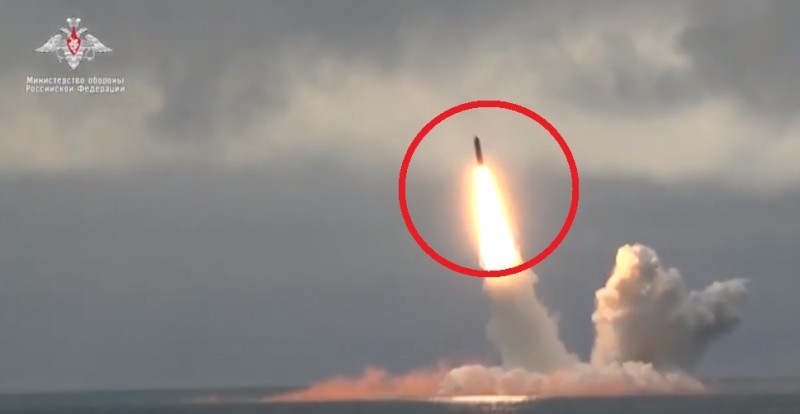 One of the surviving submachine guns designed by N.S.. Sergeeva.
One of the surviving submachine guns designed by N.S.. Sergeeva.
Partisan detachments in the occupied territories did not have access to full-fledged supplies, what, among other things,, affected the composition of their arsenals. In service, the formations could consist of both Soviet, and captured German or other foreign samples. Besides, the masters of some detachments and formations developed and manufactured weapons of their own design. An interesting example of such ingenuity is the concealed carry submachine gun., proposed by N.S.. Sergeev.
Until the very end of the occupation, the Razgrom partisan brigade operated on the territory of the Minsk region of the Byelorussian SSR, which, along with other units, includes the "Banner" detachment. The head of the armory workshop of this detachment in 1943-44 years was Nikolai Stepanovich Sergeev. Mostly he had to deal with the repair and restoration of existing weapons., as a Soviet, and German production. However, at a certain point, the goals and objectives of the detachment led to the need to create a completely new model..
For obvious reasons,, the partisans needed weapons, suitable for concealed carry. Wherein, despite the reduced dimensions and the absence of unmasking factors when carrying, it had to show sufficiently high combat characteristics. None of the samples available to the Znamya detachment met such requirements., and the senior gunsmith took action.
Instead of adapting existing samples of N.C.. Sergeev decided to make a completely new submachine gun, initially meeting special requirements. So it was possible to bring the dimensions to acceptable values and get the desired fighting qualities.. At the same time, the enthusiastic designer faced a problem typical for partisans.. He had to rely only on his own workshop and on very limited resources.. In this regard, the weapon had to be extremely simple., and also use some ready-made components.
It should be noted, that the partisan Sergeev was no stranger to the development of small arms. In the early spring 1943 years in the workshop of the "Banner" detachment held a kind of competition. Six craftsmen designed and built their own prototypes of the new submachine gun (according to other sources, they collected PPSh in artisanal conditions). According to the comparison results, the product of N.S. was recognized as the most successful.. Sergeeva. After that he was appointed head of the workshop.
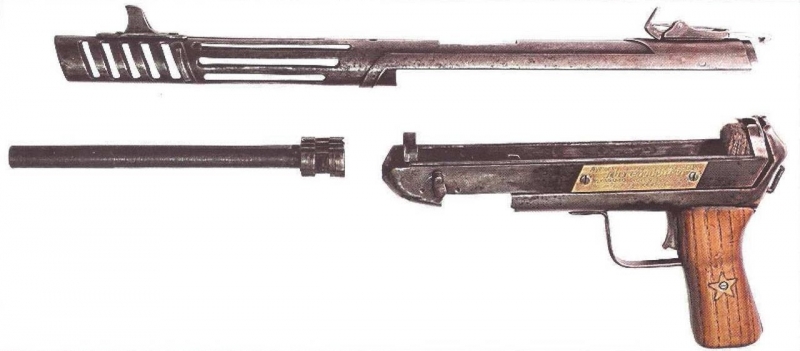 Incomplete disassembly of weapons (this sample had no butt).
Incomplete disassembly of weapons (this sample had no butt).
After the completion of work on a new weapon for hidden carrying, the Znamya's arsenal was replenished with several new products of a new type.. An interesting fact, that all Sergeev's "serial" submachine guns were built taking into account the wishes of specific fighters, who were to use this weapon. Due to this product, having a number of common features, could be noticeably different from each other.
From the point of view of design, Sergeev's submachine gun resembled a product PPSH-41. Its main and largest parts were the barrel casing., combined with the receiver cover, and the box itself. At the same time, the special tasks of the project led to the use of fittings of reduced dimensions and, in some cases, complex example. Besides, the original cocking system was proposed, which allowed to further reduce the size of the weapon.
The barrel casing was a simple tube with a set of longitudinal oval holes. Its front part was slightly larger and, due to the inclined slots, served as a muzzle brake-compensator. The exact configuration of the perforation for supplying air to the wellbore depended on the wishes of the operator.. One submachine gun could have several rows of relatively short slots, while the other received oval holes almost along the entire length of the casing. The back of the casing smoothly merged into the receiver cover, semicircular.
The receiver itself was also forged and featured special contours.. In front of it, directly in front of the shop window, there was a rounded ledge. Behind it, the main part of the box had a rectangular section.. An additional cylindrical casing had to be used to accommodate the trigger., suspended under the receiver. The handle and the trigger guard were attached to it..
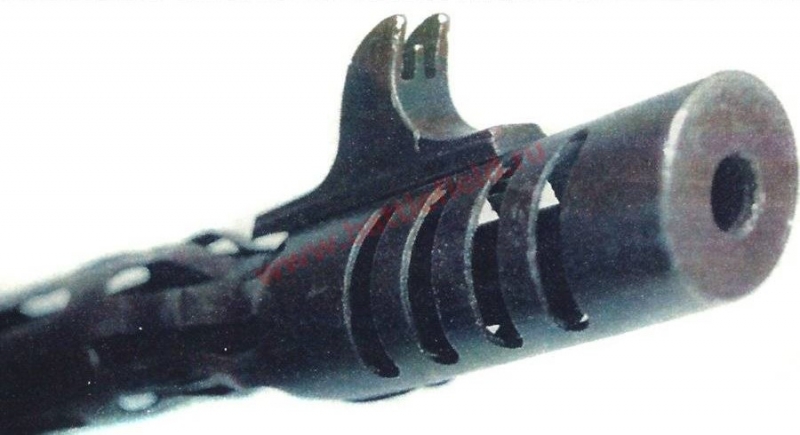 Muzzle brake-compensator. Above it is the movable base of the front sight.
Muzzle brake-compensator. Above it is the movable base of the front sight.
Receiver, its cover and barrel casing were forged from sheet iron right in the partisan workshop. On the casing of the trigger was brass from artillery casings. To protect against external influences, the main parts of the weapon were oxidized. This process was carried out in artisanal conditions using fire., onions and birch tar.
For obvious reasons,, the partisan designer could not make the barrels on his own. In this regard, ready-made barrels went into action., removed from the failed PPSh submachine guns. The latter was equipped with a rifled barrel caliber 7,62 mm 269 mm. Apparently, NS. Sergeev did not modify the finished barrels in any way, and the correctness of their installation was ensured by the design of the new weapon.
The weapon received the simplest automation based on a free shutter. A massive bolt was placed inside the receiver., back pressed by a reciprocating mainspring. There is no exact information on the design of the valve., but other information about this project suggests, she, least, was based on the ideas of the PPSh. Besides, can not be excluded, that the partisan gunsmith removed not only the trunks from the broken Shpagin submachine guns, but also closures. The recoil-combat spring was made directly in the partisan workshop.. Wire became the raw material for her, recovered from a captured German radiosonde balloon.
At the same time, the finished shutter - if used - has undergone some changes.. PPSh submachine gun, as well as other examples of similar weapons of their era, had a large cocking handle, increasing the transverse dimension. This feature of the weapon made it difficult to hidden carrying, and therefore N.S.. Sergeev came up with a new system for preparing weapons for shooting.
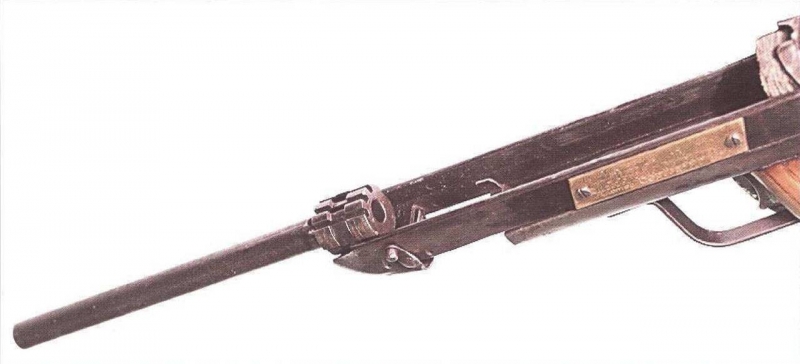 Receiver and bolt.
Receiver and bolt.
The functions of the cocking handle were now performed by the base of the front sight, appropriately shaped. A longitudinal rod-bar was attached to it from below, shutter-connected. To cocking the weapon, it was necessary to pull the base of the front sight back and move the lower bar. And, in its turn, engages the bolt and pulls it back. In the extreme rear position, the shutter was blocked by the trigger. Returning the front sight to its original position, it was possible to aim weapons and open fire. When firing, the base of the front sight did not move, although it could vibrate due to the lack of a rigid mount.
Shooting was carried out from an open bolt, and therefore Sergeev's submachine gun had a fairly simple trigger. In the basic configuration, the weapon could only fire in bursts. However, further, at the request of new operators from the partisan detachment, there was a second modification of the trigger, providing shooting in two modes. In both cases, we were talking about the simplest mechanics, which included a swinging sear to capture the shutter in the rear position.
It should be noted, that the trigger version is easily identifiable from obvious external signs. An early version of it, not able to single fire, was equipped with only one trigger. The latter was located at the back of the protective bracket, directly in front of the handle. The newer mechanism has already used two hooks. One remained in the same place, and the second was brought before him. The introduction of the second hook made it possible to abandon the relatively complex mechanisms, and also from a separate fire translator.
The weapon had to use its own detachable box magazines, also developed by N.S.. Sergeev. The store was placed in the opening in the front of the receiver and was fixed in place with a latch of a special design. Stores of two types accommodated 20 or 25 cartridges type 7.62x25 mm TT.
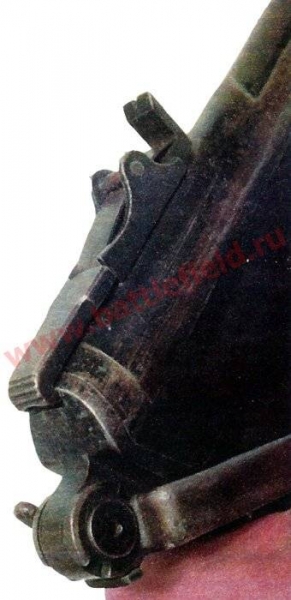 Rear part of the receiver and sight.
Rear part of the receiver and sight.
The submachine gun was the simplest sights, allowing to fire at all working ranges. An unregulated rear sight was placed on the back of the receiver cover. In front of the barrel casing there was a front sight on a movable base. The weapon was intended for shooting at ranges of no more than 100-150 m, and similar sights were quite consistent with such tasks.
A must-have item for a submachine gun, present on all released samples, was a pistol-type fire control handle. There was a metal frame under the trigger casing., on which the wooden plates were placed. The linings of all Sergeev's famous submachine guns have a simple engraving in the form of a star.
Part of the released Sergeev submachine guns received a folding stock. On the rear wall of the receiver there was a hinge support, on which the rotary structure from the captured product MP-38/40 was installed. The butt was folded by turning upwards and placed on top of the weapon. Other samples did not have such equipment..
The known data, the partisan designer managed to successfully solve the problem of reducing the size. With the stock folded (or in its absence) the length of the submachine gun slightly exceeded 450 mm. In a firing position with an unfolded butt, the product in its dimensions was similar to serial samples of industrial production and had a length of up to 670-700 mm. From the point of view of mass, it was also at the level of existing systems. Automation provided firing single or bursts with reliable defeat of manpower at distances of the order 100 m.
 Sergeev's submachine gun in the Minsk Museum of the Great Patriotic War.
Sergeev's submachine gun in the Minsk Museum of the Great Patriotic War.
The first sample of the submachine gun N.S.. Sergeeva appeared in late spring 1943 of the year. The weapon was approved by the command of the partisan detachment and "put into service". Besides, small-scale handicraft production was launched. According to some reports, later one of the samples of the new weapon was transported to Moscow and shown to the specialists of the People's Commissariat of Defense.
NS. Sergeev and his colleagues continued assembling original submachine guns until the end of the partisan war in the Belarusian forests. However, limited time reserve did not allow to manufacture a large number of weapons. In parallel with their own submachine gun, experts were forced to make other samples., as well as service already assembled weapons. Consequently, before the arrival of the Red Army, the armory workshop of the Znamya detachment was able to assemble only five Sergeev submachine guns (perhaps, including the first experienced).
All assembled guerrilla submachine guns were noticeably different from each other.. Differences, first of all, consisted in the presence or absence of a butt, as well as in the design of the trigger. These differences were due to the wishes of future weapon operators and corresponded to the peculiarities of their work.. Besides, several samples received metal plaques with dedicatory inscriptions. As far as, all built submachine guns were actively used by the partisan detachment in various operations.
 Exhibit of the Central Museum of the Armed Forces in Moscow.
Exhibit of the Central Museum of the Armed Forces in Moscow.
In July 1944 The Red Army, with the assistance of Belarusian partisans, liberated Minsk and the Minsk region from the occupiers. In this regard, the combat work of the Znamya detachment, which included N.S.. Sergeev, stopped. Soldiers began to enroll in the army or return home, rebuild destroyed cities and villages. Handicraft submachine guns left without work.
As far as, out of five or six assembled Sergeev submachine guns, at least three have survived to this day. One of them is now an exhibit of the Minsk Museum of the Great Patriotic War, another one is kept in the Moscow Central Museum of the Armed Forces. Both of these products are equipped with stocks and dual-mode triggers.. Also known to exist, least, one product without a stock and with an "automatic" trigger. The fate of the remaining submachine guns is not reliably known..
Remaining in the occupied territories, the partisans could not count on a timely and complete supply of various resources and weapons. They had to use the available weapons, beat off trophies from the enemy or make the necessary samples yourself. It should be noted, that Nikolai Stepanovich Sergeev from the Znamya detachment of the Razgrom brigade was not the only designer enthusiast. In the history of domestic small arms, several more curious samples have survived., created by partisan workshops. Each of them clearly shows the desire of people to fight the enemy and the desire by any means to bring victory closer..
Based on materials:
https://warspot.ru/
http://battlefield.ru/
http://russian7.ru/
http://modernfirearms.net/
https://nornegest.livejournal.com/
Skorinko GV. Loparev S.A. partisan weapon: collection catalog. Very.: Publishing house "Star", 2014.








